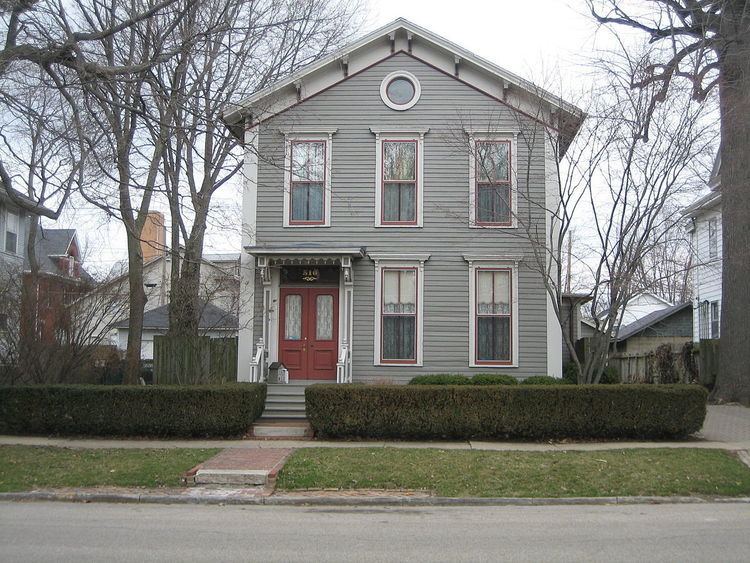Area less than one acre NRHP Reference # 78003109 Architectural style Neoclassical architecture Architect John Long Routt (Builder) | Built 1856 Opened 1856 Added to NRHP 30 August 1978 | |
 | ||
Location 510 E. Grove St., Bloomington, Illinois | ||
The Ruben M. Benjamin House is a house located in the United States city of Bloomington, Illinois. It is a two-story, rectangular building, styled in the Classical Revival architectural motif. It was built in 1856 by the man who would become the first governor of the state of Colorado, John L. Routt. Ruben M. Benjamin, a prominent attorney, lived in the home for more than 60 years. He is best remembered for litigation relating to the railroads and their regulation by state government. The United States National Register of Historic Places added the Ruben M. Benjamin House in August 1978.
Contents
History
The home was constructed in 1856 by then-carpenter John L. Routt. It is the only home in Bloomington that can definitively be attributed to Routt. The rectangular, two-story house was built for lawyer and Bloomington resident Ruben M. Benjamin. Benjamin was a prominent attorney who represented the people in The People vs. Chicago and Alton Railroad as well as helped to develop the famed Granger cases. The railroad case was widely considered a benchmark ruling which allowed the government to regulate private enterprises.
Architecture
The home is cast in the Classical Revival architectural style. The house was built by carpenter Routt, who later became the first governor of the state of Colorado. Simple in its design, the exterior of the house has remained almost unchanged since the late 19th century, possibly before that. The front of the house and the end of its gabled roof face East Grove Street, to the south. The second story features three rectangular windows with a circular window gracing the gable end at the third floor attic. At its front and back ends, the roof is supported by shallow wooden brackets. The double front door has a small, flat roof overhanging it and west side of the house features a bay window.
Significance
The house was added to the U.S. National Register of Historic Places on August 20, 1982. Though the structure is listed on the National Register independently it is included within the boundaries of the East Grove Street Historic District. The house is considered a contributing property to the historic district which was added to the National Register in 1987.
The historic significance of the home is in its association with Ruben M. Benjamin, who lived in it for more than 60 years, until he died in 1917. Benjamin was raised in Chatham Center, Columbia County, New York. He first graduated from Kinderhook Academy and then Amherst College and eventually attended Harvard law school for a year. He ended up in Bloomington in 1856. When Benjamin passed the bar exam in 1856, Abraham Lincoln served as his examiner. After passing the bar, Benjamin married and practiced law with various Bloomington lawyers, such as Asahel Gridley and Thomas F. Tipton. In 1869, Benjamin was elected to the Illinois state constitutional convention, where he distinguished himself as a leader. During the convention Benjamin strongly advocated language allowing the regulation of the freight industry. The clauses he supported were included in Article XI of the Illinois Constitution.
Benjamin soon put the new constitution to the test when he undertook, perhaps, his biggest claim to fame. In 1872, he filed quo warranto proceedings against the Chicago and Alton Railroad, demanding their charter be revoked because they were charging rates which seemed unfair. The Chicago and Alton Railroad's rate structure charged US$5.65 to haul 1000 ft (304.8 m) of lumber from Chicago to Lexington but charged 65 cents less for a longer trip from Chicago to Bloomington. As a result, lower courts ruled that the state could regulate the rate structures of railroads, later the Supreme Court of the United States overturned the ruling on the grounds that some rate discrimination may prove justifiable. During the process of their decision, the Supreme Court made it clear that states did indeed have the right to regulate the rates of railroads and, by implication, the right to regulate other companies.
